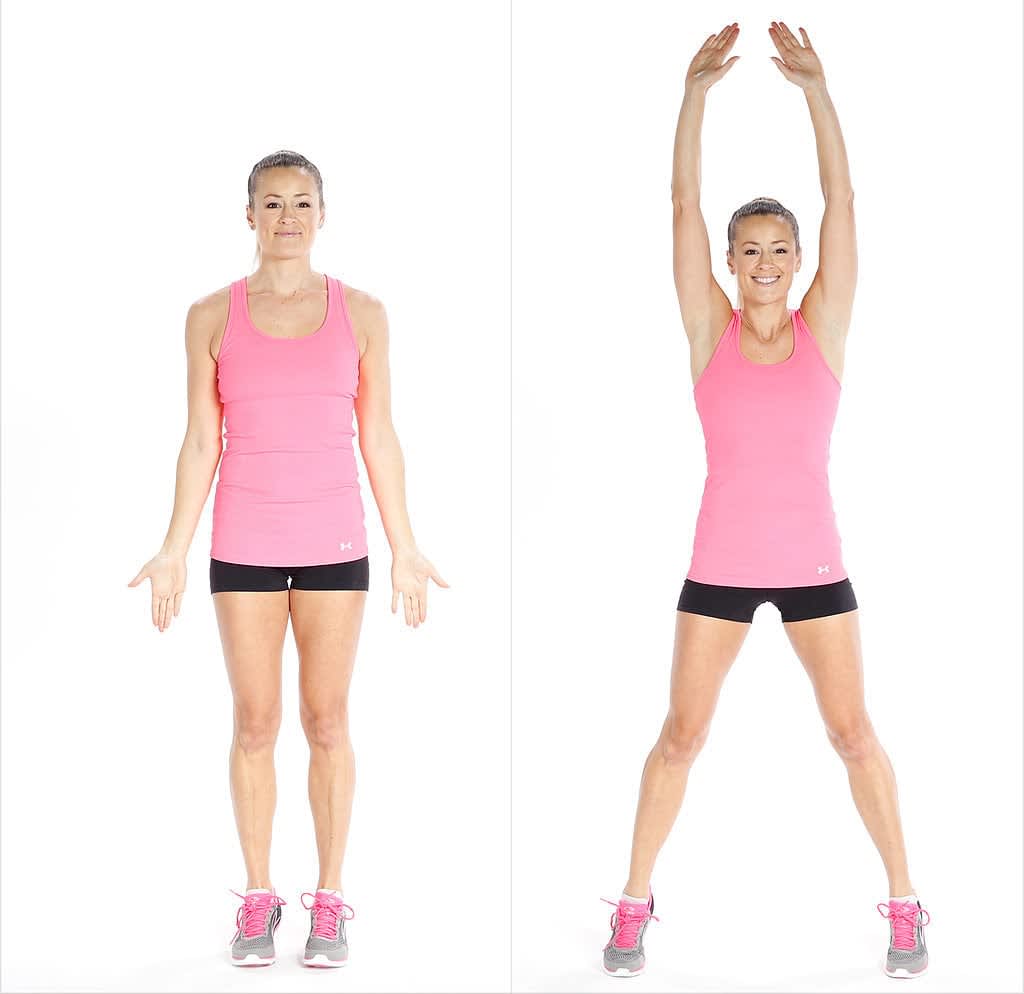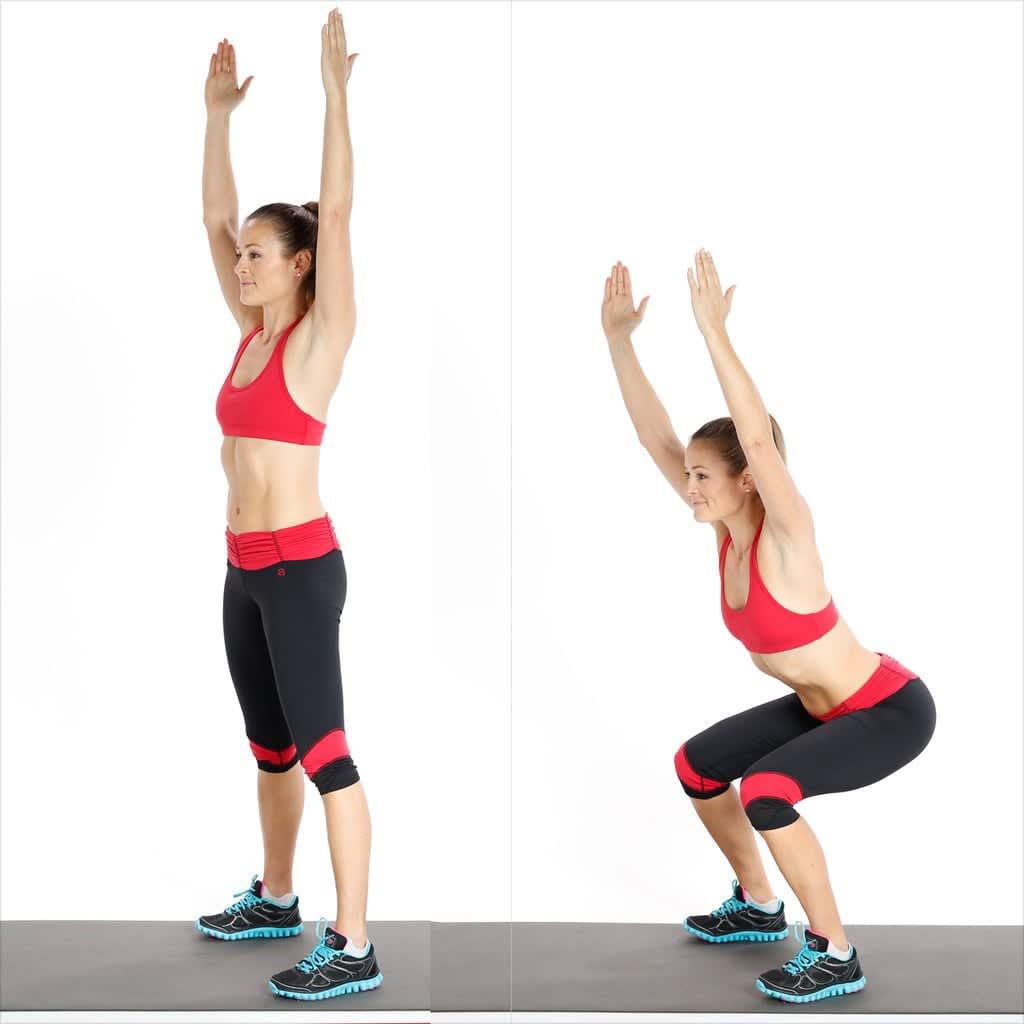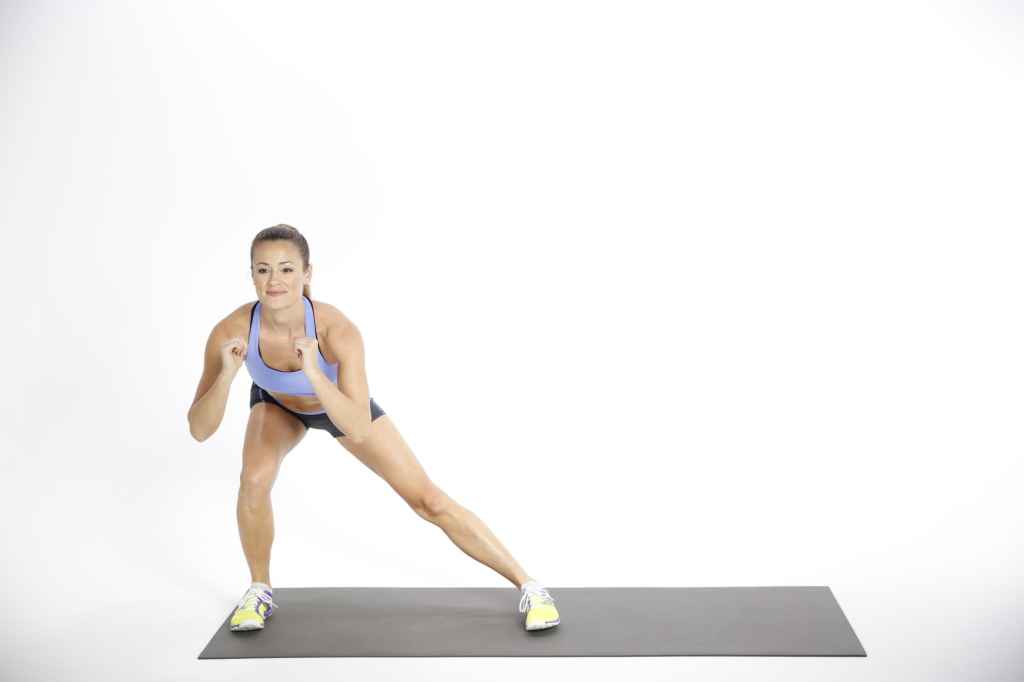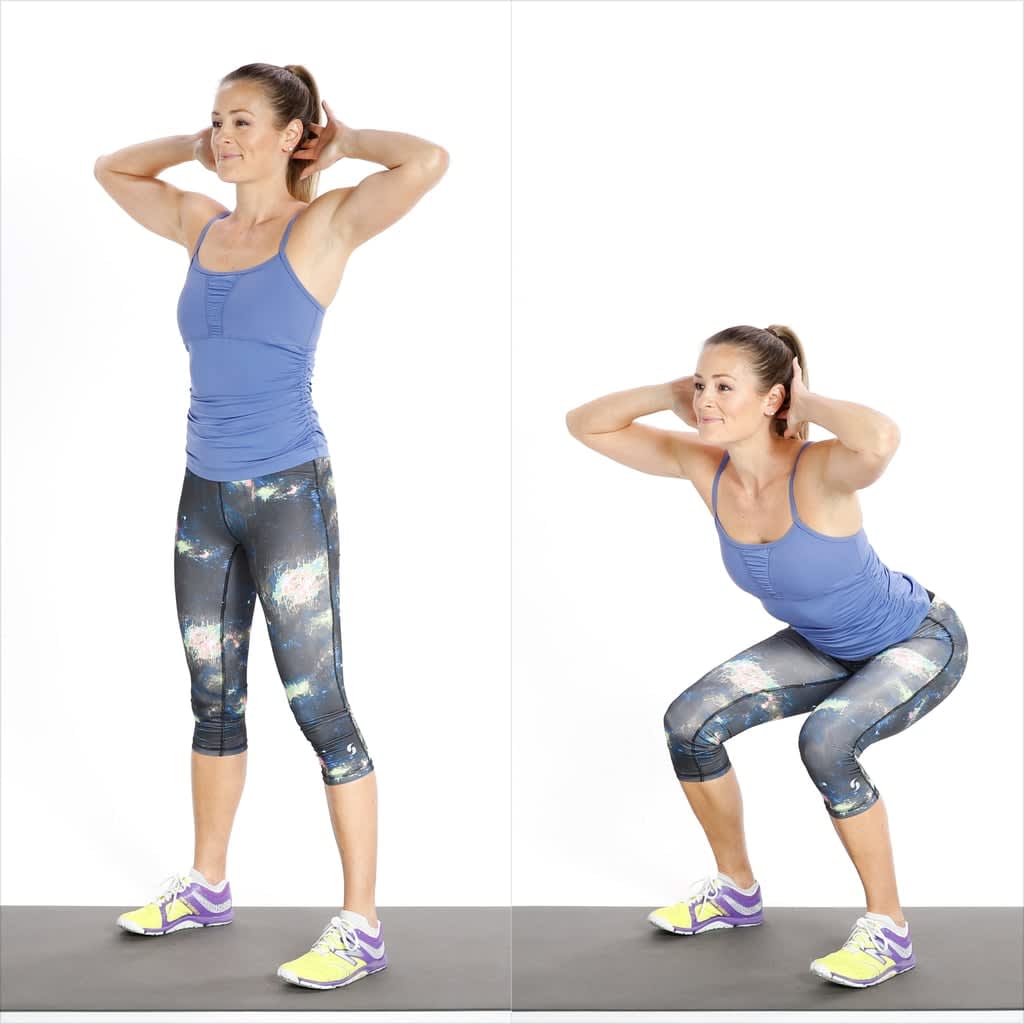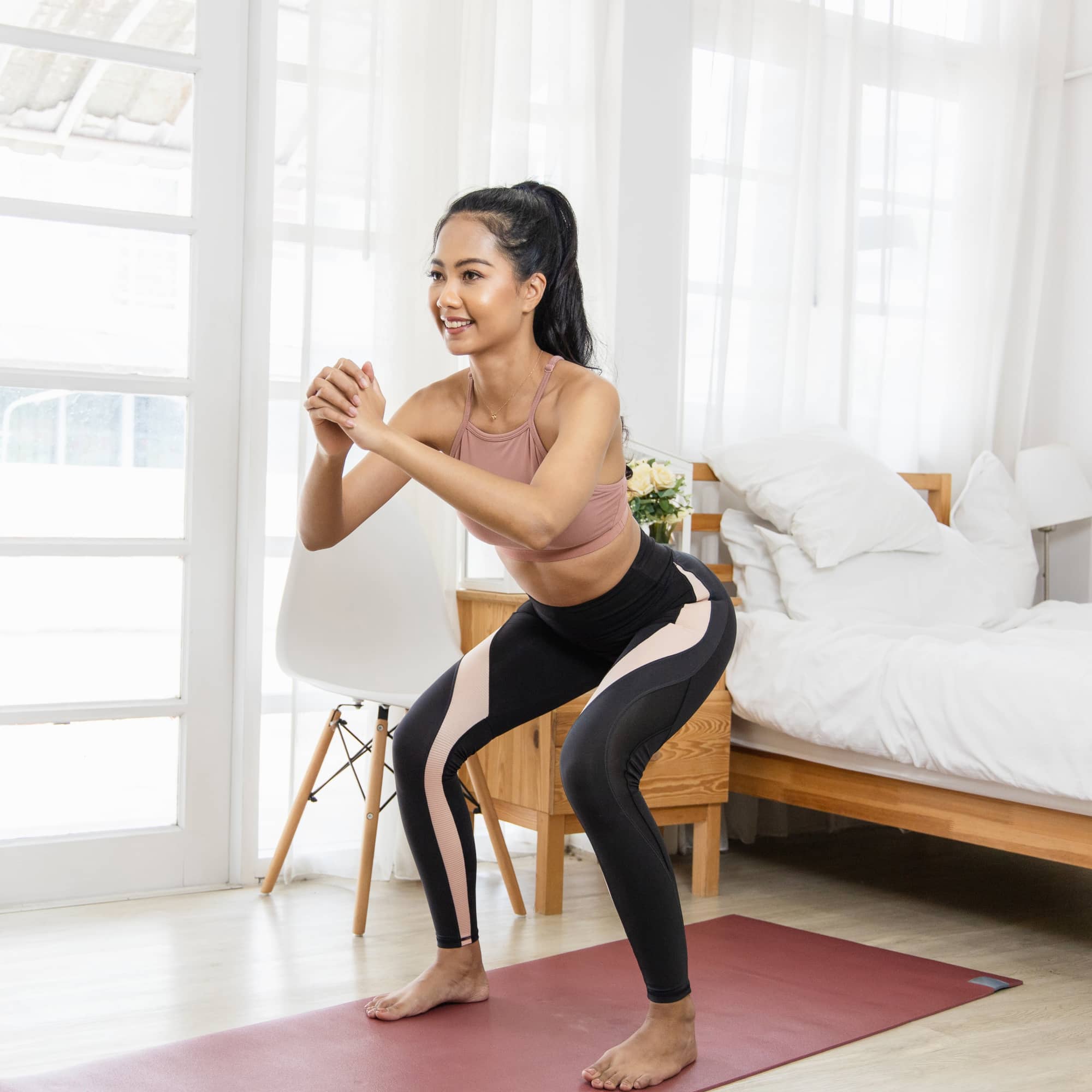
- POPSUGAR Australia
- Fitness
- 5 Low-Impact Cardio Substitutions That Won't Destroy Your Knees (or Annoy Your Neighbors)
5 Low-Impact Cardio Substitutions That Won't Destroy Your Knees (or Annoy Your Neighbors)

Whether you have limited space for plyometrics and calisthenics, or you’re trying to be a little kinder to your joints (hello, knees!), there are some easy substitutions you can make to classic high-impact cardio exercises. To get the best modifications, we talked to two low-impact experts.
“Just because these moves are low-impact doesn’t mean you won’t work up a sweat,” Lexy Parsons, a yoga instructor and IIN health coach, told POPSUGAR. “You can still get your heart rate up, and these moves can be just as challenging as a high-impact alternative. Low-impact doesn’t mean low-intensity! It’s all about the intensity you bring to it.”
Related: 14 Low-Impact HIIT Workouts For Beginners to Help You Crush Your Next Session
There are several added benefits of switching to low-impact moves, including that they’re more accessible to the elderly, injured, and pregnant populations. “It’s no secret that high-impact and high-intensity cardio workouts burn fat at a faster rate and in a short period,” said Amina Barnes, an NASM-certified personal trainer. “But for beginners, especially those who’ve had previous injuries, it’s important to start slowly and improve your strength and mobility over time. Lower-impact exercise moves allow you to leave one foot on the ground, and tend to be gentler on your joints and muscles.”
In addition, you’ll be building functional strength. “These exercises are incredibly stabilizing; you’re fine-tuning your body in a way,” Parsons explained. “You’ll gain more flexibility and control, while working your core.” Barnes agreed, adding: “There are so many low-impact alternative exercise moves that still give you an intense, heart-pumping workout without increasing your risk for injury and muscle fatigue.” Here are five of the best.
Instead of Jumping Jacks, Try Side Steps
While they’re a classic, jumping jacks can be a tad rough on the knees. Modify a low-impact version by stepping out to your left into a jumping jack position, then coming back to center, and repeating it on the right.
“Side steps are a great alternative to jumping jacks because you can substitute high-impact jumps, which put increased pressure on your hip and knee joints, for low-impact steps,” Barnes said. “This simple aerobic exercise elevates your heart rate and burns calories when performed at a fast pace. You can also add arm movements to increase your pulse rate and and overall fat burn.”
Parsons agreed: “If you can maintain good form and engage your core, pick up the pace to increase the intensity (and sweat!),” she said.
- Stand with your legs hip-width apart.
- Step one foot out to the side as you bring your arms out and above your head, like you would in a jumping jack.
- Lower your arms and bring your foot back to the starting position. Repeat on the other side. This counts as one rep.
Instead of Burpees, Try Squat With Overhead Reach
There are a whole lot of alternatives to a burpee, so you should never feel obligated to do these at home, especially if you’re trying to stick to low-impact workouts.
“Burpees are high-impact, full-body movements that can put increased pressure on your joints and quickly fatigue your muscles,” Barnes explained. “Burpees require a solid foundation of strength, mobility, and strong aerobic capacity. To reduce your risk of injury, it’s best to start small.”
Parsons recommends a variation of Utkatasana, or Chair Pose. “Consider this a yoga burpee,” she said, noting that this series of yoga postures mimics the motions of a burpee, without the impact on the joints. It’s a combination of a squat with an overhead reach and a forward thrust.
Barnes loves this move as well, because it can be a building block toward a more high-impact exercise (like a burpee), if that’s your goal. “The squat with overhead reach will prepare your body for more high-intensity moves by strengthening your legs and increasing the flexibility of your hips, knees, and ankles. You can also improve your posture and stability with each overhead reach.”
Another tip from Barnes: “Want to torch more calories? Don’t forget to increase your speed.”
- Begin with your feet slightly wider than hip-width apart and toes pointed slightly outward. Raise your arms up until your upper arms are even with your ears.
- Keeping weight in your heels, sit back into a deep squat. Make sure your knees are stacked over your toes and keep your pelvis tucked under to engage your core as you squat.
- Deepen your abdominal engagement as you press through your heels to return to standing, squeezing the glutes as you press your pelvis forward. This is all about control! This completes one rep.
Instead of High Knee Skips, Try Lateral Lunge to Oblique Twist
High knees and high knee skips can be harsh on sensitive knee and hip joints. Work the same muscles with this alternative that Parsons and Barnes both recommend: a lateral lunge to an oblique twist.
“The lateral lunge to oblique twist is a low-impact cardio exercise that allows you to keep both feet low to the ground,” Barnes told POPSUGAR. “Unlike high knee skips, this exercise doesn’t require you to put intense pressure on your lower-body joints. With each lunge, step, and upper-body twist you do, you increase strength in your quadriceps, hamstrings, and glutes, all while sculpting your lower ab muscles.” Sounds like a win all around, right?
- Start with feet hip-distance apart.
- Step your right foot out to the side, sitting your hips back, coming into a lateral (side) lunge. Keep the weight in your right heel.
- As you stand, shift weight to your left heel and drive your right knee up and across your body, connecting with your left elbow (see here for an example). This completes one rep.
- Repeat for as many reps as you’d like, then switch sides.
Instead of Jump Squats, Try Squat Pulses
“Squat pulses are low-impact aerobic movements that help you sculpt and tone your thighs, calves, and glutes,” Barnes explained. Parsons agreed: “This version of squats is more stabilizing for those with a knee injury than a jump squat or squat with a calf raise,” she said.
Barnes noted that jump squats can create “extreme pressure and discomfort in your joints,” while this type of squat “allows you to steadily build in your intensity and burn calories with both feet planted safely beneath you.”
- Begin in a classic squat, with your feet hip-distance apart and weight in your heels, your knees bent, and your hips sitting back as low as you can. Make sure your shoulders remain directly over your hips and your knees stacked over your toes.
- Holding this position, pulse up and down, moving about an inch in either direction.
- Each pulse counts as one rep.
Instead of Lunge Skips, Try Reverse Lunge With a Kick
Instead of a high-impact jump with your bodyweight hitting the floor repeatedly, Parsons recommends you opt for a low-impact kick that will up your heart rate while activating more of your core.
Barnes explained that this is a great alternative to lunge skips because you can still build lean muscle and burn calories – without stressing your joints. “You can turn up the intensity and calorie burn by deepening your lunge and steadily increasing your speed,” she said. “This exercise will also improve flexibility in your hip flexors, hamstrings, and quadriceps while strengthening your lower back, core, and glutes.”
- Step back with your left foot coming into a deep lunge, bending both knees to 90 degrees.
- Press the right heel into the ground as you push off with your left foot, kicking your left leg to touch your left toes to your right hand.
- With control, return to the lunge position. This completes one rep.


